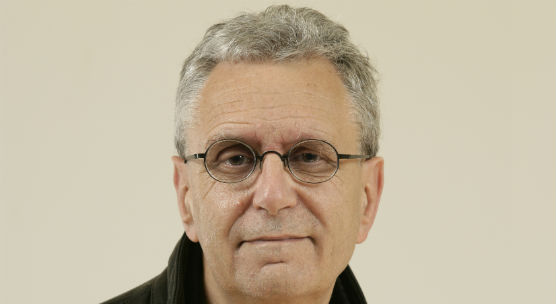‘Molecular origami’ enables scientists recreate RNA process in lab
Published On Mon 19 Sep 2016 by Grant Hill

University of Dundee scientists have used nanotechnology to perform ‘molecular origami’ in order to replicate naturally occurring genetic processes, research that may one day help enable the precise, targeted delivery of drug molecules in humans.
Nanotechnology is engineering at an unimaginably small scale, that of individual molecules. Nature has led the way with this, constructing complex structures and functioning machines inside living cells, and scientists are taking a lead from this to engineer molecular-scale objects using natural molecules as building blocks.
Professor David Lilley, Director of the University’s Cancer Research UK Nucleic Acid Structure Research Group, and his colleague Dr Lin Huang have been exploring how nano-scale molecular structures can be engineered from the basic material ribonucleic acid (RNA). RNA, along with the better-known DNA, directs all the genetic functions in every cell.
While RNA and DNA are chemically similar, they differ functionally and structurally. Whereas DNA stores genetic information like a library, RNA performs almost every other function in the expression of that information, acting as a “genetic worker bee”, according to Professor Lilley. RNA is formed from a single long molecule, rather than the distinctive double-helical structure of DNA, and can fold up into an almost infinite variety of interesting shapes. This capacity can be exploited by nanoscale engineering.
Professor Lilley and Dr Huang examined so-called ‘kink-turns’, widespread RNA architectural elements that mediate long-range interactions. They found that two such units put together in just the right way form a tight horse-shoe structure that can be used as a basis for the assembly of a variety of shapes.
The researchers generated synthetic kink-turns in the laboratory, and used X-ray crystallography to study how they built up into dumbbell, triangle and square structures within the crystal. Their work demonstrates that the kink-turn is a powerful building block in the construction of nanoscale molecular objects, and illustrates why they are widely used in natural RNA molecules to organise long-range architecture and mediate contacts.
The findings act as a proof of principle that scientists can manipulate the shape of RNA to their will. This may one day have implications for targeted therapies as doctors could enclose drugs in RNA, addressing them to a particular point for release rather than acting systemically throughout the whole body.
“Increasingly, scientists are interested in nanoscale engineering – building molecules to order,” said Professor Lilley. “Indeed, I spoke at an inaugural international conference of this topic just a few weeks ago. You can use DNA and RNA for building objects but they are so complicated that you need to find ways of analysing this. What we find is that there are repeated elements that help to guide the structure.
“One of these is called a kink-turn because it sharply kinks a helical section of RNA and so we’ve put in a huge effort in recent years to understand the structure itself, what it does, and why it does what it does. We now think we understand it pretty much more than any other structure in RNA and have reached the point where we can engineer it, and programme it to form our own structures. This is what we have now done.
“We used the kink-turn to fold into simple geometric structures like dumbbells and triangles and squares in RNA - a kind of molecular origami. People are making molecular scale machines with DNA but there have been few attempts to engineer RNA yet. Yet RNA has greater potential, and our work shows that in principle you can make tiny objects with precise geometry. To give an indication of just how small these objects are, you could line up 10,000 or more across the width of a single human hair.
"What we have done for the moment is prove the principle that we can engineer the structure of RNA much as nature does. Different shapes perform different functions. The ones we have made are flat, 2D shapes, but other laboratories are trying to make little pyramids or tetrahedra or even cubes.
“As always, nature is there ahead of us, and we are trying to work out why certain shapes are formed and what they do. The beauty of these things is that they self-assemble according to the sequence of their basic components. We can manipulate the shape by modifying this sequence. "
Professor Lilley’s paper is published in the journal Nanoscale, and has been selected as one of their ‘Hot Papers’ of 2016.
For media enquiries contact:
Grant Hill
Press Officer
University of Dundee
Nethergate, Dundee, DD1 4HN
Tel: +44 (0)1382 384768
Mobile: 07854 953277
Email: g.hill@dundee.ac.uk